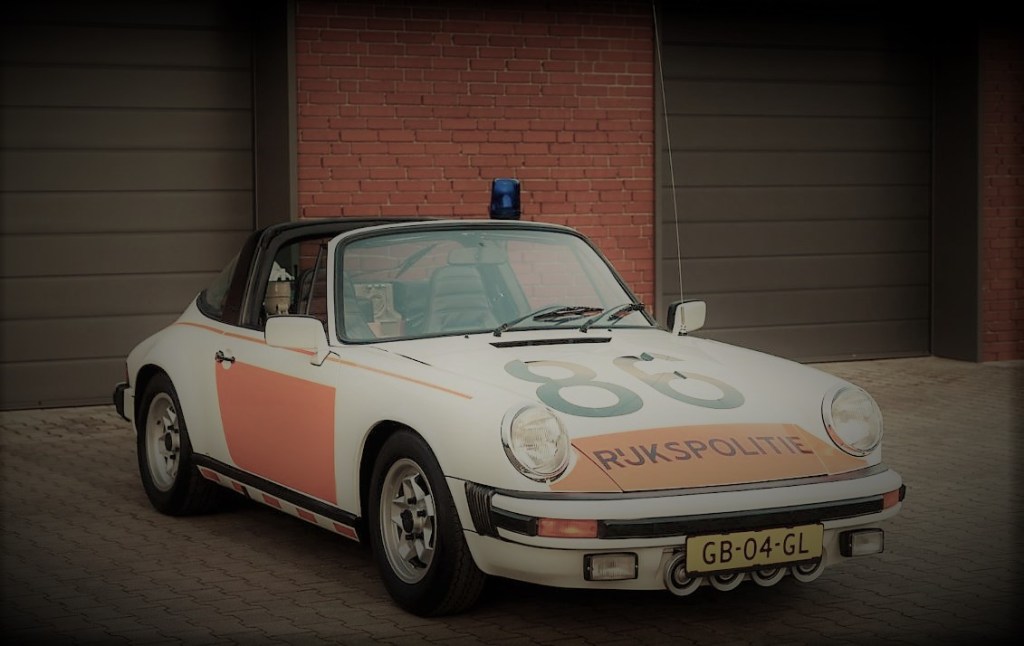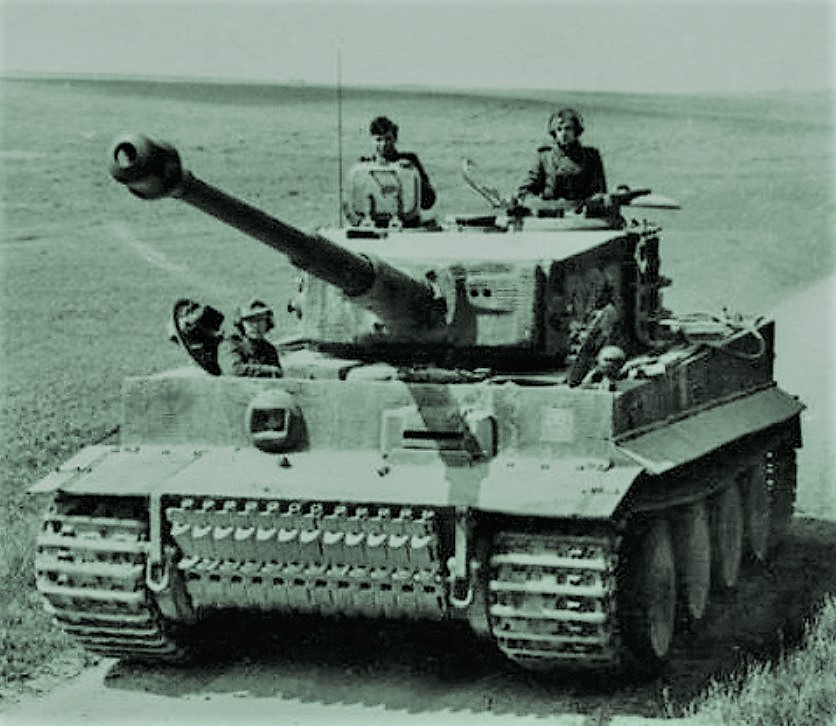
When you think of sports cars, one of the names you think of is Porsche. When you see a Porsche driving by, there is no second-guessing as to what car it is.
The Dutch police used Porsches between 1962 and 1996. In the early 1960s the absence of speed limit indications on Dutch motorways saw serious accidents on the rise, so the Rijkspolitie (State police) was tasked with finding a suitable vehicle for high-speed patrol. The list of requirements was exacting: it had to be mechanically reliable, it had to handle, it had to stop on a dime and, of course, it had to have an open top. Apparently, this last one was so that, unlike any other police force in the world, its officers could stand up in their cars to direct traffic. The choice they made was Porsche.

But Porsche didn’t start as a manufacturer of sports and race cars.
Part of Hitler’s vision for his new Germany was to build an affordable motor vehicle for the population, and he tasked the entire German automotive industry with creating it. Porsche submitted his design in 1934 and, in 1935, was awarded the contract by an impressed Hitler. In fact, the Führer was so pleased that he wanted to name the Wolfsburg factory where the car was to be built the ‘Porsche Plant’, but Ferdinand rejected the offer and the name was changed to the Volkswagen Plant (“Volkswagen“ meaning “people’s car“).
In June 1934, Porsche received a contract from Hitler to design the people’s car (or “Volkswagen”), following on from his previous designs such as the 1931 Type 12 car designed for Zündapp. The first two prototypes were completed in 1935.
A small car that would be cheap enough for all Germans. Hitler liked the idea and ordered the manufacture of Stadt des KDF.-Wagens under the organization of the Deutsche Arbeitsfront.

With Hitler’s approval, Porsche and his business partner Albert Speer set up a factory in Fallersleben, a town 30 miles (48 kilometres) Northeast of the city of Braunschweig, and because of the war, all production from this camp was to be used for military purposes only. In 1942, Porsche and Speer started a project to see how they could use concentration camp inmates for cheaper, and large-scale production of their cars, in order to benefit their industry. The prisoners of Arbeitsdorf were skilled workforce used for construction tasks, building a casting plant and other facilities and receiving better captivity conditions in return.
So on 8 April 1942 a new concentration camp, Arbeitsdorf, was opened with 800 inmates from the Neuengamme concentration camp. The camp commands of Neuengamme and Arbeitsdorf were united in the person of Martin Weiss, the camp commander of Neuengamme at this time. On 26 April 1942 inmates from the Sachsenhausen concentration camp and on 23 June inmates from Buchenwald arrived.
In mid-July 1942, the camp was taken over by Wilhelm Schitli, the officer formerly in charge of the prisoners’ barracks (Schutzhaftlagerführer) at Neuengamme concentration camp. The Arbeitsdorf camp was disbanded in the first half of October 1942 because the Ministry of Armaments and Munitions had not approved Volkswagen’s plans for operating an aluminium foundry at the site. The building that had been constructed to contain the foundry was used later for other purposes. Nonetheless, as regards the SS plan to use concentration camp prisoners for armaments production, the Arbeitsdorf concentration camp proved to be an important experiment in the systematic exploitation of concentration camp prisoners for industrial purposes.

This clearly indicates that Albert Speer was actively involved in setting up concentration camps, and was responsible for at least the deaths at Arbeitsdorf. Speer always denied any involvement in the Holocaust.
Porsche produced a heavy tank design in 1942, the VK4501 also known as “Tiger (P).”

Due to the complex nature of the drive system, a competing design from Henschel was chosen for production instead.
Ferry Porsche’s life was intimately connected with that of his father, Ferdinand Porsche, Sr., who began sharing his knowledge of mechanical engineering already in his childhood. With his father, he opened a bureau of automobile design, in Stuttgart in 1931.
Ferry volunteered to join the SS on December 17, 1938, later claiming, falsely, that he had been conscripted by Himmler to design the Schwimmwagen. He would continue to deny having volunteered until his death.
In November 1945, the Porsche family was asked to continue the design of the Volkswagen in France and to move the factory equipment there as part of war reparations. Whilst in France, Porsche was also asked to consult on the design/manufacture of the upcoming Renault 4CV, which led to serious conflict with the recently appointed head of Renault, the former resistance hero, Pierre Lefaucheux.

Differences within the French government and objections from the French automotive industry put a halt to the Volkswagen project before it had even begun. On 15 December 1945, French authorities arrested Porsche, Anton Piëch, Ferdinand’s son-in-law, and Ferry Porsche as war criminals, under rightful suspicion of collaboration as personal friends of the former fuhrer. While Ferry was freed after 6 months, Ferdinand and Anton were imprisoned first in Baden-Baden and then in Paris and Dijon.
Together, with his sister Louise, Ferry took over the management of the company. Early on, the workshop was primarily used for automotive repair. Additionally, they commercialized water pumps and lathes.

In time, they obtained two contracts for automobile design. One was for the construction of racecars for the Cisitalia racing team. The other was for the design of their car, which later became known as the Porsche 356.
One fact that is often overlooked is that aside from Ferdinand Porsche and his son-in-law Anton Piëch, there was a third person at the foundation of the Porsche company, Adolf Rosenberger.
In 1931, he founded Porsche GmbH together with Ferdinand Porsche and Dr Anton Piëch. With Rosenberger’s financial backing, Ferdinand Porsche and Anton Piëch started the company with some former co-workers, including chief designer Karl Rabe. Rosenberger was also instrumental in the creation of the Auto Union concern, being credited with influencing Porsche’s choice of a mid-engined design for the Auto Union racing cars.
Rosenberger’s racing career ended abruptly in 1926 after a serious accident at the Grand Prix in Berlin left three people dead; he was severely injured. He instead began investing in real estate in his hometown of Pforzheim, then partnered with Porsche to help finance their race-car designs and turn them into drivable prototypes.

Despite Rosenberger’s contribution to the development of German automobiles and German auto racing, when Hitler came to power in Germany, Rosenberger, a Jew, was arrested for “Rassenschande” (racial crimes) and imprisoned at KZ Schloss Kislau near Karlsruhe. He was released, by the goodwill of a colleague, Baron von Veyder-Malberg, Rosenberger’s successor at Porsche, who had intervened with the Gestapo in Karlsruhe, successfully lobbying for his release. But Rosenberger still had to pay the Gestapo 53.40 reichsmarks [$455] for his time in “protective custody,” as the euphemism went. Despite later claims to the contrary, Ferdinand Porsche and Anton Piëch did nothing to secure their cofounder’s freedom.
Rosenberger was forced to leave Germany immediately. He emigrated to France, and later to Great Britain, representing Porsche GmbH in both of those countries. He immigrated to the United States in 1939 and 1944 he became a US citizen under the name of Alan Arthur Robert. He moved to California, where he was active in motorsports and the automobile business. He died in Los Angeles, California, in 1967.
During the Nazi era, the role in the auto history of many Jews, like Adolf Rosenberger, along with Josef Ganz, Siegfried Marcus, and Edmund Rumpler was written out of history.
sources
https://www.jstor.org/stable/j.ctt16gzb17.11#metadata_info_tab_contents

Donation
I am passionate about my site and I know you all like reading my blogs. I have been doing this at no cost and will continue to do so. All I ask is for a voluntary donation of $2, however if you are not in a position to do so I can fully understand, maybe next time then. Thank you. To donate click on the credit/debit card icon of the card you will use. If you want to donate more then $2 just add a higher number in the box left from the PayPal link. Many thanks.
$2.00

Reblogged this on History of Sorts.
LikeLike